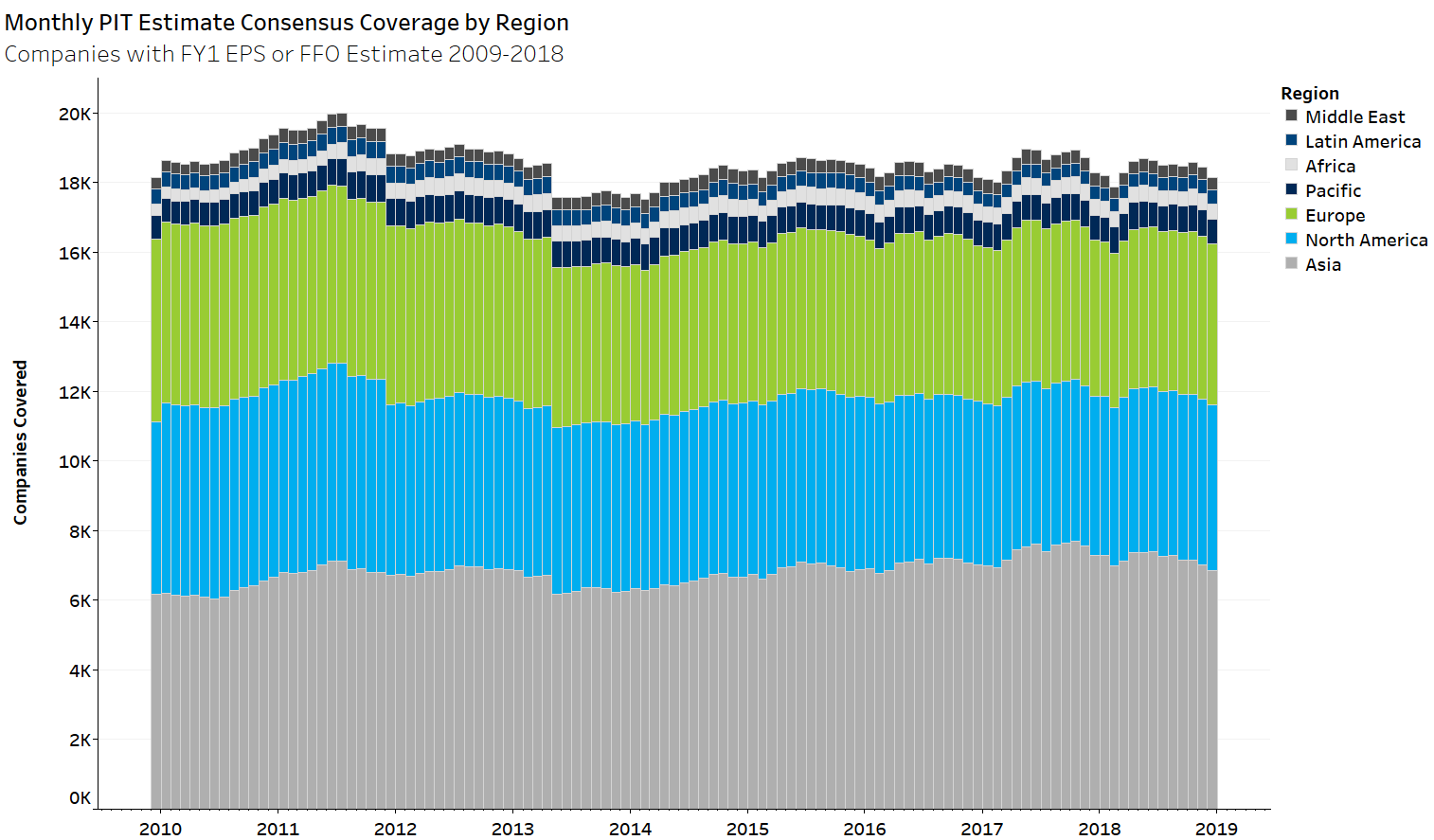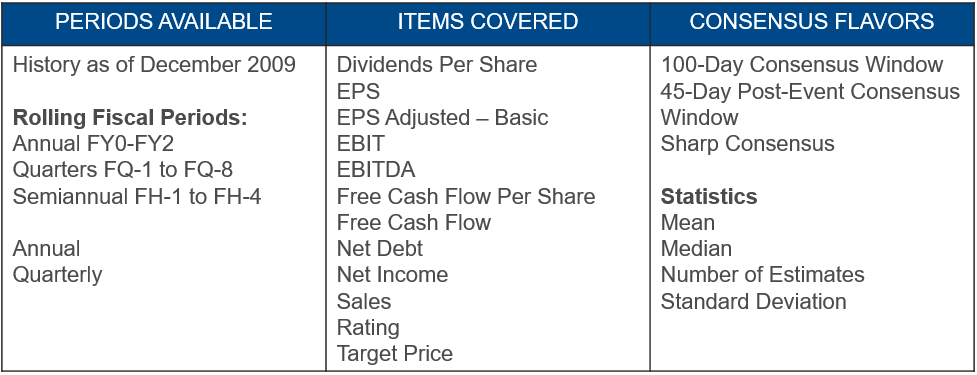Basics
Content Category: Estimates
Open:FactSet Page: Click here
Setup a Demo and Access Today: sales@factset.com
FactSet Estimates Point-in-Time (PIT) Consensus is a global database, comprised of over 800 contributors, covering the markets of 90 countries, providing comprehensive Sell-Side broker estimates and statistics with daily updates and 10+ years of history. By providing point-in-time snapshots of consensus data, the data feed removes any aspect of look-ahead bias.
Data Overview
Asset Class: Public Companies
Data Frequency: Daily
Delivery Frequency: Intraday updates three times per day
History: History as of December 2009

Data Methodology
The Point-in-Time database provides daily consensus data relative to the local midnight for each company. The consensus snapshot ensures the data that has been used for the calculation was available at the date of this calculation. No data entered after the local midnight snapshot time can be included in that date’s consensus calculation. The Point-in-Time database is not adjusted for dilutions, QA corrections, changes to the default currency, or broker estimates that were not available as of the consensus date.

A true differentiator within the PIT Consensus data set is the FactSet Sharp Estimate. The Sharp Consensus is calculated by identifying a custom window within the 100 day default consensus. This window is calculated by an algorithm which analyses revision patterns among analysts that cover a company. These revision patterns suggest that new information has entered the market impacting the security's consensus value. It can be an event relative to the company itself (profit warning, new contract, etc…), relative to the sector (e.g. a big price change for commodities will impact "Energy companies") or a natural disaster (storm / earthquake). The date at which a significant number of broker revisions occur is referred to as the "Sharp Event Date". This represents the starting point of the Sharp Consensus window. These events are determined when multiple broker revisions occur within a short time frame.
In addition to occurring within a short time frame, these revisions must also follow the same trend (Upward revisions vs. Downward revisions). Once the event is identified, the Sharp Consensus Estimate is calculated using all post event estimates up to the perspective date (by default "Now"). If no Sharp Event Date can be determined within the 100 days window, no Sharp Consensus Estimate can be calculated.
For more information on the methodology, check out the FactSet Estimates Whitepaper.
Use Cases
FactSet Estimates PIT Consensus can be used across a variety of applications but has been tailormade for quantitative applications. The ability to access point-in-time measures for a global universe can be seamlessly incorporated into revision models, pre-or-post announcement drift analysis, or risk management.
The details provided above are as of December 2019.
If you have any questions or would like to learn more about any of the content mentioned above, please contact us at sales@factset.com.
Please visit the product page on the Open:FactSet Marketplace for more information: FactSet Estimates Point-in-Time Consensus.




